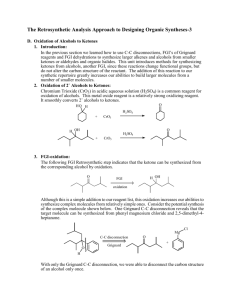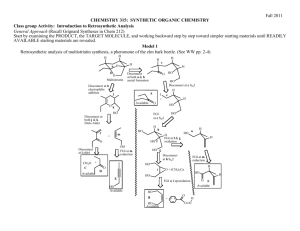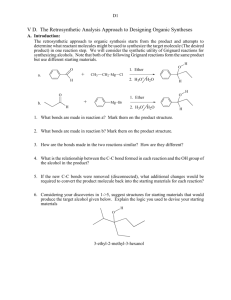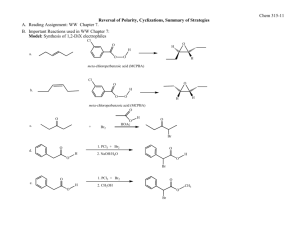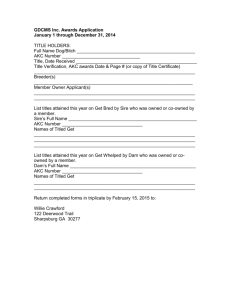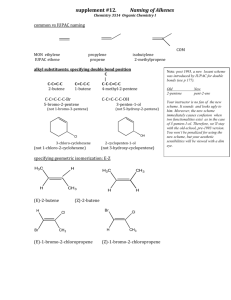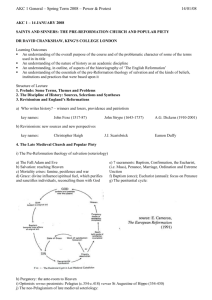The Retrosynthetic Analysis Approach to Designing Organic
advertisement
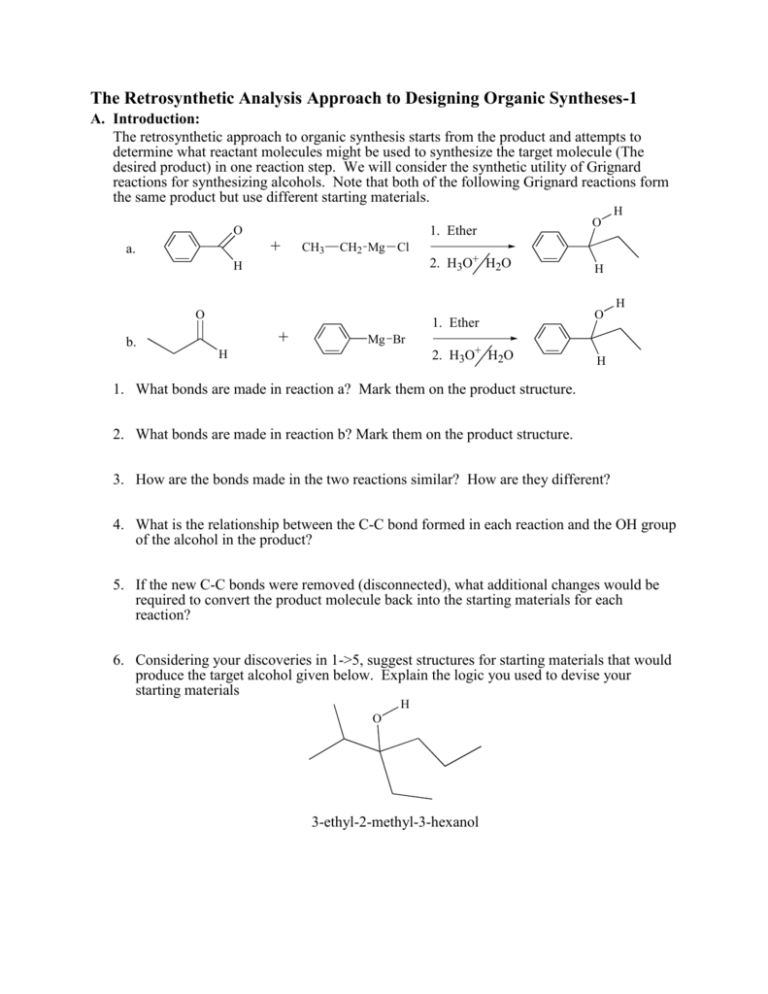
The Retrosynthetic Analysis Approach to Designing Organic Syntheses-1 A. Introduction: The retrosynthetic approach to organic synthesis starts from the product and attempts to determine what reactant molecules might be used to synthesize the target molecule (The desired product) in one reaction step. We will consider the synthetic utility of Grignard reactions for synthesizing alcohols. Note that both of the following Grignard reactions form the same product but use different starting materials. O 1. Ether + a. CH3 CH2 Mg Cl H 2. H3O+ H2O O H H H O 1. Ether + b. O Mg Br 2. H3O+ H2O H H 1. What bonds are made in reaction a? Mark them on the product structure. 2. What bonds are made in reaction b? Mark them on the product structure. 3. How are the bonds made in the two reactions similar? How are they different? 4. What is the relationship between the C-C bond formed in each reaction and the OH group of the alcohol in the product? 5. If the new C-C bonds were removed (disconnected), what additional changes would be required to convert the product molecule back into the starting materials for each reaction? 6. Considering your discoveries in 1->5, suggest structures for starting materials that would produce the target alcohol given below. Explain the logic you used to devise your starting materials H O 3-ethyl-2-methyl-3-hexanol Retrosynthetic Analysis-1 2 B. Synthesis of Alcohols: C-C Disconnections 1. Retrosynthetic Analysis Look at the product molecule, find the alcohol OH and identify the bonds around the carbon holding the OH. These are the bonds that could have been made by a Grignard reaction. Disconnect each bond (C-C disconnections) in turn to reveal potential precursors for the product. Then identify the reaction that will reveal the precursors of the Grignard reagent. In the terminology of Retrosynthetic Analysis, a process such as the formation of the Grignard reagent is a Functional Group Interconversion (FGI) since it changes the nature of the functional group but does not change the carbon structure. So the retrosynthetic step for formation of an organometallic reagent is symbolized by FGI Grig, since it is the formation of a Grignard reagent. Full Retrosynthetic Analysis for the synthesis of 3-ethyl-2-methyl-3-hexanol (Starting materials in bold) H O b. O a. a. c. synthon synthon C-C Disconnection O Mg Cl FGI Grig Cl + MgÞ c. C-C Disconnections b. C-C Disconnections O O synthon O synthon CH3 Mg Br synthon FGI Grig Br + MgÞ CH2 synthon O FGI Grig CH3 CH2 Mg Cl CH3 CH2 Cl + MgÞ 2. Synthesis based on retrosynthetic analysis b: O H O Br + MgÞ Dry Ether 1. Dry Ether Mg Br 2. H2SO4/H2O Retrosynthetic Analysis-1 3 3. An Additional C-C Disconnection Example b. a. O a. c. CH3 Mg Cl FGI Grig CH3 Cl + MgÞ C-C Disconnection O H b. C-C Disconnections c. C-C Disconnections O FGI Grig CH3 CH2 Mg Cl CH3 CH2 Cl + MgÞ O FGI Grig Mg + MgÞ Cl Cl 4. Synthesis based on retrosynthetic analysis c: O 1. Dry Ether Dry + Cl MgÞ Ether Mg 2. H2SO4/H2O Cl O H 5. Class Discussion Problem on Alcohol Synthesis: Use Retrosynthetic Analysis to devise a synthetic pathway for the following compound from smaller molecules. O H Then write a complete synthetic path, including reagents and reaction conditions based on your retrosynthetic analysis. Retrosynthetic Analysis-1 4 6. Out of Class Exercises on C-C disconnections in alcohol syntheses. For our next lab discussion period, use retrosynthetic analysis to devise at least two syntheses for the following compounds. H O CH3 N CH3 O H Then write complete synthetic paths, including reagents and reaction conditions based on your retrosynthetic analyses. Be prepared to discuss both the retroanalysis and the synthesis.
